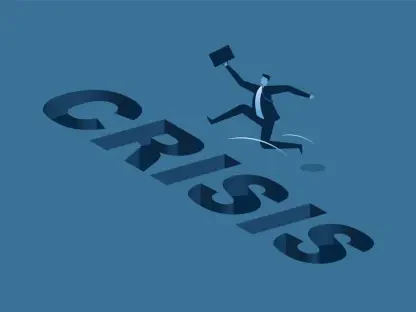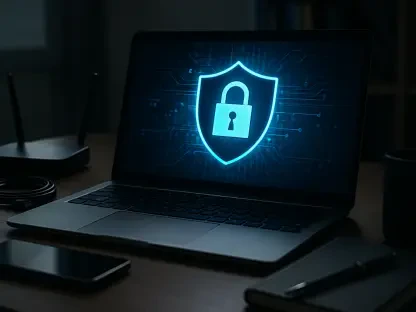In a nation where student debt towers at a staggering $1.6 trillion, affecting over 45 million Americans, a seismic policy shift looms on the horizon that could alter the financial landscape for countless individuals. Picture a single parent, juggling a modest teaching salary and mounting loan payments, relying on federal protections to keep financial ruin at bay, and imagine the uncertainty if those lifelines are handed over to profit-driven private lenders.
Why This Debate Matters Now
The significance of this issue cannot be overstated, as it strikes at the heart of how society values education and supports its citizens. With Democratic lawmakers—over 40 strong—penning a fierce letter to Education Secretary Linda McMahon and Treasury Secretary Scott Bessent, the clash over privatization has become a battleground for broader questions about government responsibility. The potential transfer of loans valued at $1.1 trillion by the Federal Student Aid office could reshape the financial future for millions, making this a critical moment to examine who stands to gain and who risks being left behind.
This controversy also taps into a growing unease about the affordability of higher education. As student debt outpaces other forms of consumer borrowing, the idea of entrusting private entities with such a massive portfolio raises alarms about accessibility and fairness. The outcome of this policy discussion could set a precedent for how public goods are managed, influencing not just borrowers but taxpayers across the nation.
The Push for Privatization and Its Promises
Behind closed doors, discussions between the Trump administration and private stakeholders hint at a vision of reduced government liability through the sale of high-performing loans. While neither the Education nor Treasury departments have publicly detailed their stance, reports suggest an intent to generate immediate revenue and streamline federal operations. Proponents of this approach argue that private lenders could bring efficiency to loan management, potentially cutting bureaucratic overhead that burdens the current system.
Yet, this perspective lacks transparency, as lawmakers have demanded clarity on who is involved in these talks and what terms are being considered. Without public disclosure, the promise of fiscal relief remains speculative, overshadowed by concerns about the true cost of such a move. The absence of concrete plans leaves room for skepticism about whether privatization serves the public interest or merely shifts burdens elsewhere.
The Risks Lurking in Privatization’s Shadow
Delving into the potential fallout, the erosion of borrower protections emerges as a primary concern. Federal programs like income-driven repayment plans and Public Service Loan Forgiveness offer vital relief, options that private lenders are unlikely to replicate due to their profit-driven models. A teacher counting on debt forgiveness after a decade of service could find themselves trapped under harsher terms if loans change hands, facing a future of unrelenting financial pressure.
Financial risks to taxpayers add another layer of complexity. A 1998 law stipulates that any sale must result in no cost to the government, yet critics warn that selling loans at a discount could lead to billions in losses. The Project on Predatory Student Lending (PPSL) challenges the $1.1 trillion valuation, arguing that flawed assumptions might undervalue the portfolio, while the government’s unique powers—such as garnishing tax refunds—make these loans more valuable in public hands.
Legal barriers further complicate the picture. Democratic lawmakers highlight that altering loan terms to attract private buyers could violate the Fifth Amendment, as these terms represent a form of property for borrowers. Such constitutional concerns, paired with historical precedents like the abandoned plans from earlier Trump administration efforts, underscore the persistent hurdles that privatization faces.
Voices Rising Against the Sale
Prominent figures like Senators Elizabeth Warren and Richard Blumenthal have sounded a clarion call, cautioning that privatization could “strip borrowers of critical protections” and cause “irreparable harm.” Their warnings resonate with countless Americans who depend on federal safeguards to manage crushing debt. PPSL reinforces this stance, emphasizing that the government’s unique enforcement tools make the portfolio far more valuable under public control than in the private market.
Real-world stories amplify these concerns. Consider a nurse who, after years of public service, anticipates loan forgiveness as a reward for dedication. If private lenders assume control, such relief could vanish, leaving individuals like this nurse grappling with unexpected burdens. These personal narratives underscore the human toll of policy decisions, grounding abstract debates in tangible consequences.
Charting a Path Forward
Navigating this contentious issue requires deliberate steps to safeguard both borrowers and public interests. Transparency stands as a non-negotiable priority—lawmakers’ demands for detailed accounts of the administration’s discussions with private entities must be met with open, verifiable responses. Independent audits are equally crucial to ensure that any proposed sale adheres to the 1998 legal standard of no cost to the government, protecting taxpayer funds from unnecessary losses.
Borrowers, too, hold a pivotal role in shaping this outcome. Engaging with elected officials and supporting advocacy groups like PPSL can amplify their concerns, ensuring that individual voices influence policy. These collective efforts provide a framework to balance fiscal considerations with the urgent need to preserve protections, offering a roadmap through an uncertain landscape.
Reflecting on a Contentious Crossroads
Looking back, the debate over selling federal student loans to private lenders revealed a profound tension between public good and private gain. Lawmakers and advocates stood firm against the potential loss of borrower safeguards, while the administration’s opaque intentions fueled distrust. The clash exposed deep-seated questions about the role of government in education and financial equity, leaving an indelible mark on policy discourse.
As this chapter closed, the path ahead demanded vigilance and action. Stakeholders needed to push for rigorous oversight of any future proposals, ensuring that legal and ethical standards were upheld. Borrowers were encouraged to stay informed and vocal, advocating for systems that prioritized their stability over corporate profits. Ultimately, the resolution of this issue hinged on a commitment to transparency and accountability, setting the tone for how society valued access to education in the years that followed.








